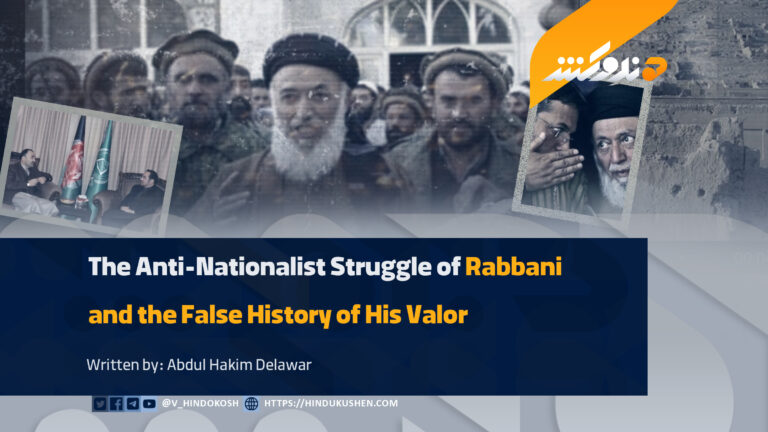Written by: Abdul Hakim Delawar
A few days ago, on the occasion of the 14th anniversary of Rabbani’s assassination, the “Resistance Council”—comprised of Jamiat’s intellectual slaves and Rabbani’s infamous like-minded allies such as Atta Mohammad Noor and others—issued a statement. Alongside other nonsensical remarks, they praised Rabbani’s jihad, resistance, and national politics, and called him the standard-bearer of justice.
These hollow and false claims are easily exposed by a brief reflection on his disgraceful record, and the tricks of falsification and forgery collapse quickly. Therefore, in this article, drawing on the historical record of this contemporary dark figure of Afghanistan, we will lift the mask off this warlord and reveal his true nature to the esteemed reader.
The U.S. occupation of Afghanistan and the subsequent rise of the Republic regime provided an ideal opportunity for the followers of warlords—whose hands were drenched with the blood of thousands of innocent people—to use false narratives and exploit their positions to conceal the true faces of their self-proclaimed leaders.
Among them, one figure who was relentlessly whitewashed both during his life and after his death was Burhanuddin Rabbani—the man appointed as the first president of the Islamic government after the Soviet-backed regime collapsed.
Many analysts regard Rabbani’s refusal to step down from the leadership of the Mujahideen interim government after his four-month term ended as one of the most crucial causes of the outbreak of the civil war—bloody battles that claimed countless innocent lives and destroyed homes and livelihoods.
At that time, contrary to the agreement made among the Mujahideen leaders, instead of relinquishing power, Rabbani created the so-called “Ahl al-Hall wa’l-‘Aqd Council” to legitimize his decision—choosing its members himself—so he could remain in power by misusing Islamic symbols.
Undoubtedly, in addition to his many unspoken crimes, Rabbani bears primary responsibility for igniting the civil wars on one hand, and for the unforgettable Afshar massacre on the other. These stains remain a permanent mark of shame on his forehead and that of his followers and will never be forgotten by the Afghan nation. Instead, generation after generation, these truths will be passed down.
In the final years of his life, due to his loyalty to the puppet Republic regime, Rabbani was appointed by that regime as head of the High Peace Council—a man who, out of arrogance and for his personal and party interests, had already dragged thousands to their deaths.
Rabbani’s death did not mark the end of this dark path, for after him, other prominent figures of this notorious party—such as Atta Mohammad Noor and his son Salahuddin Rabbani—continued the same treacherous and nation-selling course. Their greed was so boundless that they could not even remain united among themselves, and deep divisions soon emerged between them.
It is worth noting that with the collapse of the Republic regime and the disappearance of the propaganda power of these parties’ followers, more and more of the long-suffering Afghan nation is discovering the true nature of these individuals. To the extent that now, aside from their former fellows, no one else speaks of them, praises them, or commemorates their memories.
Note: The articles, essays, and comments published by the Voice of Hindukush only reflect the views of the authors & writers and do not necessarily represent the agreement of the Voice of Hindukush.




